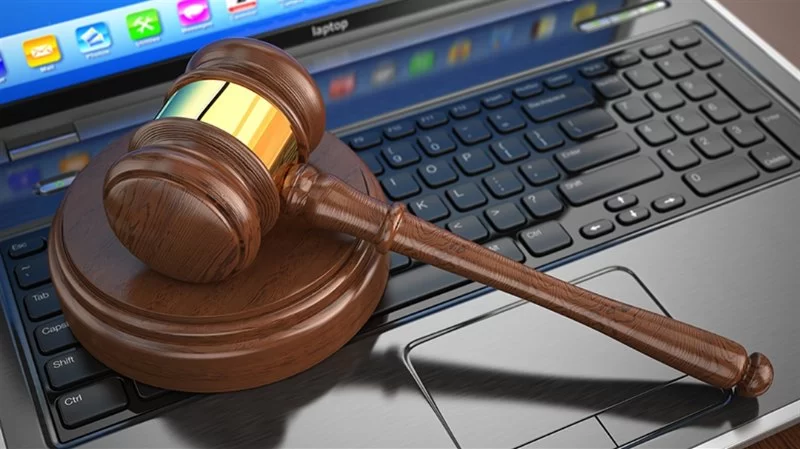
- evolution-of-virtual-court-hearings - Evolution of Virtual Court Hearings
- how-virtual-court-hearings-via-mobile-devices-work - How Virtual Court Hearings via Mobile Devices Work
- benefits-of-mobile-access-to-virtual-hearings - Benefits of Mobile Access to Virtual Hearings
- real-case-examples-and-courtroom-adaptations - Real Case Examples and Courtroom Adaptations
- challenges-faced-in-mobile-courtroom-justice - Challenges Faced in Mobile Courtroom Justice
- the-future-of-digital-justice-and-your-next-step - The Future of Digital Justice and Your Next Step
1. Evolution of Virtual Court Hearings
Before the pandemic, courtrooms were strictly in-person venues, guarded by procedure, presence, and punctuality. But COVID-19 triggered a dramatic transformation. Courts had to go remote—and fast. What began as an emergency shift soon evolved into a permanent hybrid model. Virtual court hearings via mobile devices are now redefining legal accessibility in ways previously unimagined.
Even post-2022, jurisdictions from the UK to Pakistan, and states across the U.S., have continued using virtual hearings. From minor civil disputes to bail hearings and even witness testimonies in high-profile cases, mobile technology is at the forefront of courtroom modernization.
2. How Virtual Court Hearings via Mobile Devices Work
2.1 Devices and Platforms in Use
Participants—whether attorneys, judges, or litigants—can join hearings using smartphones or tablets via secure platforms like Zoom for Government, Cisco Webex, or court-authorized apps. With strong encryption protocols and identity verification, these sessions maintain courtroom integrity.
2.2 Step-by-Step Process
Once a hearing is scheduled, parties receive a virtual court notice containing login details. They must ensure stable internet access, a quiet space, and identity verification. Court clerks confirm attendance, and judges retain full authority just as in a physical setting. Proceedings are often recorded and documented in real-time.
2.3 Legal Acceptance and Security Measures
Many courts have updated procedural codes to allow digital evidence submission, virtual witness testimonies, and online oath-taking. Multi-factor authentication and monitored digital courtrooms ensure compliance with legal standards.
3. Benefits of Mobile Access to Virtual Hearings
3.1 Accessibility for All
People in rural areas, those with mobility challenges, and professionals who travel frequently now enjoy improved access to justice. Mobile access cuts travel time, lowers costs, and makes it easier for underrepresented groups to appear in court.
3.2 Increased Efficiency
Judicial calendars are easier to manage, with reduced adjournments and time savings. Lawyers no longer have to wait hours in crowded court corridors. Entire caseloads can be resolved faster, which helps ease the burden on overworked courts.
3.3 Environmental and Economic Savings
The reduction in commuting and physical paperwork contributes to a lower carbon footprint. Moreover, litigants save on transport, legal clerks on printing, and judicial departments on facility upkeep.
4. Real Case Examples and Courtroom Adaptations
In April 2023, a family court in Lahore allowed a mother stationed in Dubai to attend a custody hearing via her iPhone. The judge praised her punctuality and presentation. In another case, an elderly landowner in Texas testified from a hospital bed using FaceTime, marking a rare but life-changing moment in legal inclusion.
Courtrooms have adapted with touchscreen podiums, digital document display systems, and mobile-friendly portals. Even lawyers are now being trained in “virtual court etiquette” as part of continued legal education.
5. Challenges Faced in Mobile Courtroom Justice
5.1 Technical Failures
Internet connectivity issues remain a major obstacle, especially in remote regions. Courts must also deal with audio/video lags, low-resolution visuals, and security breaches.
5.2 Digital Literacy Gap
Not all litigants or even judges are equally comfortable with mobile tech. This creates a digital divide that can affect fairness. Training and awareness campaigns are now essential.
5.3 Legal Complexities
Remote hearings may raise constitutional questions about the right to confront witnesses in person, or difficulties in verifying non-verbal cues during cross-examinations. Some legal bodies argue for stricter oversight and hybrid-only approaches for sensitive trials.
6. The Future of Digital Justice and Your Next Step
6.1 Long-Term Adoption
Virtual court hearings via mobile devices are here to stay—especially for procedural hearings, status checks, and administrative cases. The future could include AI-powered real-time translations, emotion-detection software, and blockchain-authenticated court records.
6.2 Your Role as a Litigant or Lawyer
Whether you're a legal professional or someone heading into a virtual court session, understanding your rights and responsibilities in this new format is critical. Always double-check your device compatibility, court notices, and documentation procedures.
6.3 Trusted Legal Support
To make sure your mobile courtroom experience is smooth and successful, consult professionals who specialize in digital litigation support. At ESPLawyers, we help clients prepare for virtual appearances, submit electronic evidence, and understand digital courtroom procedures in detail.








